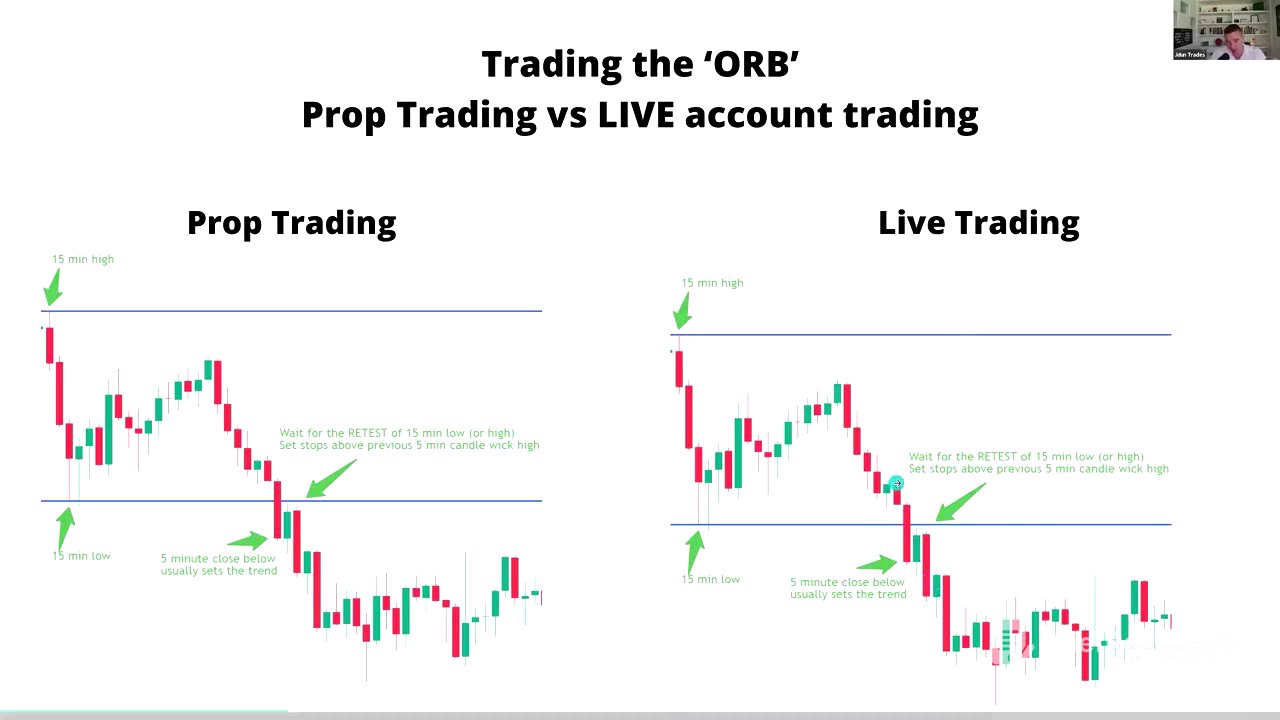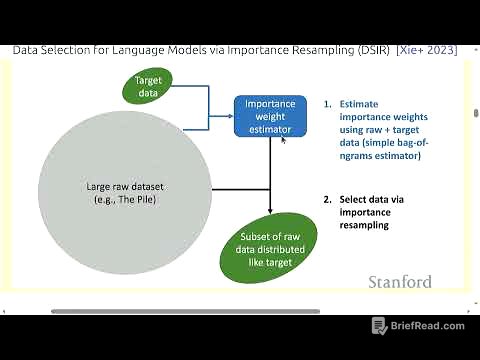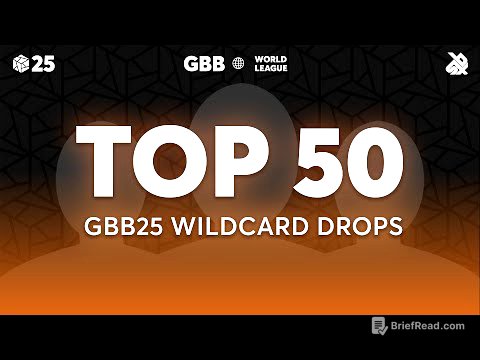TLDR;
This masterclass by Jdun Trades focuses on trading the 15-minute opening range breakout (ORB) strategy, including how to trade it, reverse it, and use various levels and confluences. It emphasises the importance of managing expectations, patience, and risk, while providing golden rules for trading the ORB effectively. The session also covers the significance of the midline, orb reversals, and how to incorporate supply and demand concepts into the strategy.
- The strategy has a 60-80% win rate with proper risk management.
- Patience is crucial; waiting at least 15 minutes before trading is essential.
- Key rules include waiting for a five-minute candle close above or below the ORB, defining risk, and knowing potential key levels.
Introduction to the 15-Minute ORB Strategy [0:00]
The session introduces a masterclass on trading the 15-minute ORB strategy, which has reportedly generated over $50,000 in the last month. The objective is to equip traders with enough knowledge to implement the strategy effectively. The speaker stresses that attendees will gain confidence for their trading.
Setting Expectations and Understanding the Edge [0:51]
The strategy does not work every time, and losses are inevitable. The win rate is between 60% and 80%. The strategy helps to remove the guesswork from trading, providing a significant edge by allowing traders to enter with solid risk-reward ratios. The goal is to catch trend moves safely, avoiding the dangers of trying to time tops and bottoms.
The Importance of Patience [4:20]
Patience is essential for trading the ORB strategy successfully. Traders should wait for price to develop and discover its direction, often an hour or more into the trading day. Early entries or entering before candle closes will likely lead to failure.
Golden Rules of Trading the ORB [6:15]
The golden rules include:
- Having the patience to wait for the first 15 minutes at a minimum to trade.
- Seeing a five-minute candle close above or below the level.
- Defining risk, preferably above the five-minute high or based on potential loss.
- Knowing potential key levels of support, resistance, supply, and demand.
- Managing trades based on whether trading with personal capital or prop firms.
Candle Closure and Retest Strategies [6:50]
It is important to wait for a five-minute candle to close above or below the 15-minute high or low. A preferred entry involves waiting for a retest of the level after the closure, with stops placed below the wick of the retesting candle. If a retest doesn't occur, consider entering with a smaller position size, leaving room to add, and keeping stops below the trend-setting candle.
Prop Firm Considerations and Live Trading [14:54]
Prop firms have consistency rules that must be considered. On the other hand, live trading accounts offer more flexibility without consistency rules, allowing traders to hold winners and maintain a positive risk multiple. A hard stop should always be set, ideally above the trend-setting candle, to allow the trade room to breathe.
The Hidden Gem: Trading the Midline [20:51]
The midline, found using Fibonacci retracement between the high and low of the ORB, is a key area for potential reversals. Anomalies, such as a large green candle with low volume, can signal that a move is unlikely to sustain itself. Traders can look for rejections at the midline, combined with volume analysis and trend line breaks, to identify high-probability shorting opportunities.
Orb Reversals and Trading Examples [28:59]
An orb reversal occurs when price moves aggressively in one direction, then reverses and closes back through the 15-minute high or low. In such cases, traders can set monetary stops or use the low of the wick of higher low candles as a reference. It's crucial to avoid chasing candle lows and instead wait for key points or lower high setups.
Reviewing Trading Examples and Key Principles [41:47]
The more times a level is tested, the weaker it becomes. After an aggressive rebound from a low, a reversal is likely. Traders should wait for the next candle to open, enter with stops below the candle open, and target pre-market highs. The key to successful ORB trading is consistency, discipline, and mental toughness.
Tesla Examples and Adapting to Market Conditions [53:39]
The 15-minute ORB strategy can be applied to individual stocks like Tesla. Traders should adapt their approach based on pre-market trends and key levels. When drawing the midline using Fibonacci retracements, always follow the trend.
Homework and Key Takeaways [1:00:16]
The homework involves writing out the golden rules and personal trading challenges on sticky notes to reinforce discipline. Traders should avoid self-sabotage and focus on managing risk.
Supply and Demand [1:02:27]
Supply and demand zones are identified using hourly or four-hour time frames, looking for swing highs, swing lows, and fair value gaps. Higher time frames can help traders avoid shorting into key support levels.
Conclusion and Final Thoughts [1:05:43]
The webinar concludes by encouraging traders to apply the lessons learned, manage risk, and keep moving forward. The speaker expresses gratitude for the positive feedback and announces future sessions based on demand.






![첫 회부터 전채널 1위하며 시청률 15.5%찍은 술 제조 명가 재벌집 충격적 스토리를 다뤄 화제인 [독수리 5형제를 부탁해!]](https://wm-img.halpindev.com/p-briefread_c-10_b-10/urlb/aHR0cDovL2ltZy55b3V0dWJlLmNvbS92aS9hNG8yV2l3Z01Ddy9ocWRlZmF1bHQuanBn.jpg)


